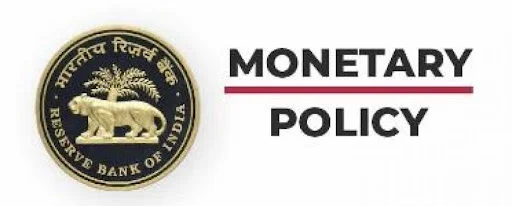The Reserve Bank of India (RBI) has announced its monetary policy for 2024, aiming to balance the dual objectives of fostering economic growth and maintaining price stability. This policy comes at a time when the Indian economy faces a mixture of persistent inflationary pressures and a need for sustained economic momentum post-pandemic.
Key Highlights of the Policy
1. Interest Rates and Inflation Control
One of the central components of the RBI's policy is the decision to keep the repo rate unchanged at 6.5%. This decision reflects the RBI's cautious stance amid mixed signals from various economic indicators. While inflation rates have moderated compared to the peaks observed in the previous year, they remain above the RBI's comfort zone of 4%. The decision to hold the rate steady indicates the RBI's focus on ensuring that inflation continues on a downward trajectory without stifling economic growth.
2. Liquidity Management
The RBI has introduced measures to manage liquidity in the banking system. By tweaking the Cash Reserve Ratio (CRR) and implementing open market operations (OMOs), the RBI aims to ensure that there is adequate liquidity to support credit growth, which is essential for fueling investment and consumption in the economy. The fine-tuning of liquidity conditions is particularly critical as the economy adjusts to the evolving global economic landscape.
3. Support for Priority Sectors
The RBI has also announced targeted measures to support key sectors of the economy. Special refinance windows have been extended for sectors such as agriculture, MSMEs (Micro, Small, and Medium Enterprises), and affordable housing. These sectors are crucial for employment generation and inclusive growth, and the RBI's support is aimed at enhancing their access to credit at reasonable rates.
4. Digital and Technological Innovations
In recognition of the rapid advancements in fintech and the increasing role of digital payments, the RBI has laid out a roadmap for further digitization of the financial sector. Initiatives include enhancing the infrastructure for digital payments, promoting the use of the Unified Payments Interface (UPI), and fostering innovation in the financial technology space. These steps are expected to enhance financial inclusion and make banking services more accessible to a broader segment of the population.
5. Financial Stability and Regulation
The RBI's policy emphasizes the importance of maintaining financial stability. This involves stringent regulatory oversight of banks and non-banking financial companies (NBFCs), ensuring that they maintain adequate capital buffers and adhere to sound risk management practices. The RBI has also reiterated its commitment to resolving stressed assets in the banking sector through mechanisms like the Insolvency and Bankruptcy Code (IBC).
Economic Context and Challenges
The RBI's monetary policy for 2024 is shaped by several global and domestic factors. On the global front, geopolitical tensions and fluctuating commodity prices continue to pose risks to economic stability. Domestically, the challenge lies in managing inflation without derailing the growth momentum. The agricultural sector's performance, particularly in light of climatic uncertainties, also plays a significant role in the inflation dynamics.
Furthermore, the RBI faces the task of steering the economy through a period of potential global economic slowdown while ensuring that the growth in domestic consumption and investment does not falter. The interplay between these factors makes the formulation and implementation of monetary policy a complex exercise.
Future Outlook
The RBI's policy stance for 2024 indicates a balanced approach aimed at supporting growth while keeping inflation in check. The continued focus on financial stability, liquidity management, and support for priority sectors reflects a comprehensive strategy to navigate the economic challenges and leverage opportunities.
As the year progresses, the effectiveness of these measures will be closely monitored. The RBI has signaled its readiness to adjust its policy tools in response to evolving economic conditions, demonstrating a commitment to maintaining macroeconomic stability and fostering a conducive environment for sustainable growth.
In conclusion, the RBI's monetary policy for 2024 underscores its pivotal role in steering the Indian economy through uncertain times, with a focus on resilience and long-term stability. The strategic initiatives outlined in the policy are designed to address immediate challenges while laying the groundwork for future economic prosperity.




No comments:
Post a Comment
Thank you for your support